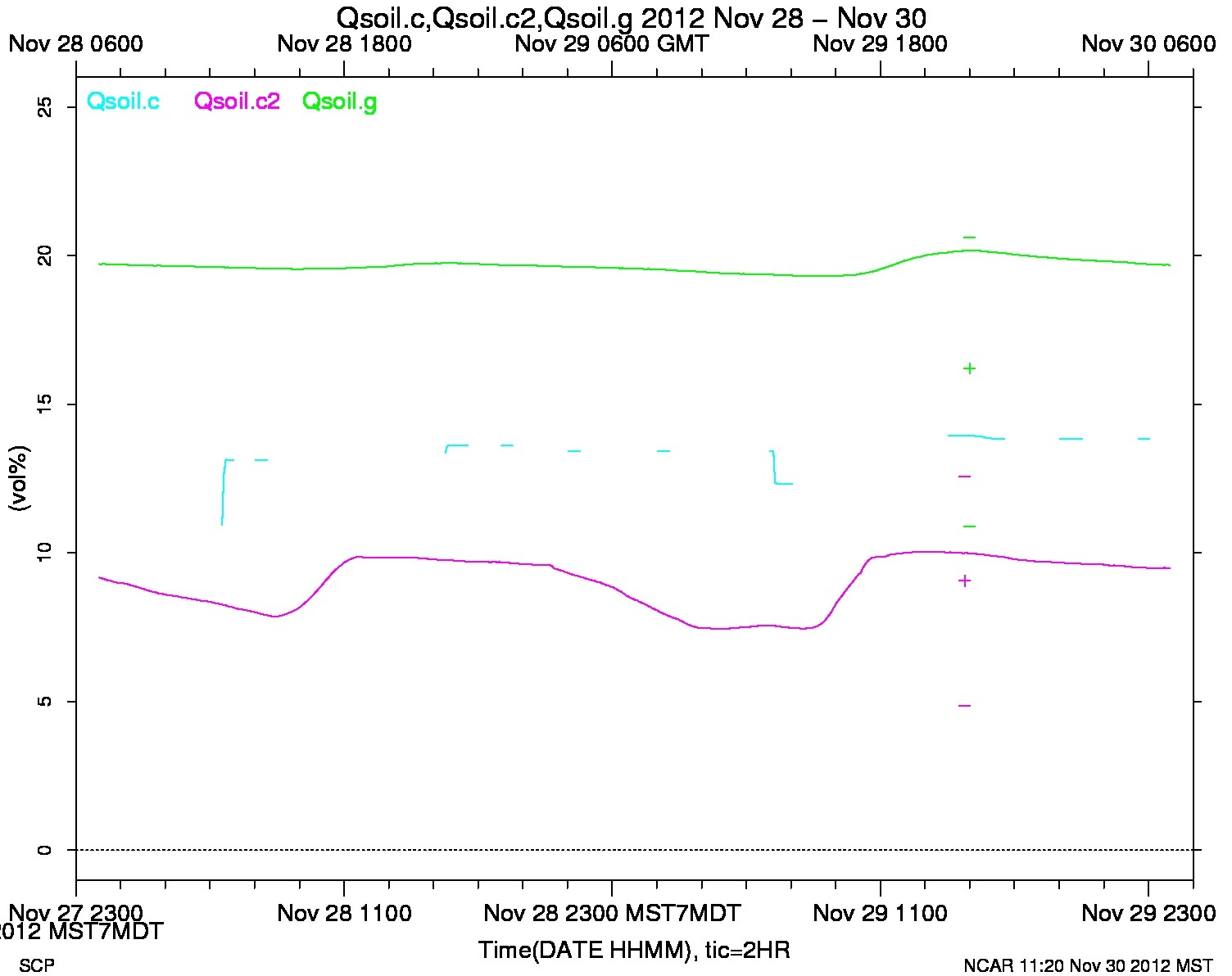Cores taken at cactus and then grass at about 1445 today (29 Nov). I brought them back to Boulder and did the first weighing at about 1715, so hopefully they hadn't dried too much. Both samples did not completely fill up the corer (despite being pounded in all the way on the outside). Thus I would estimate that the first core is 0-2.5cm and the second from 2.5-5.5cm.
From the PCAPS entry: The coring tool was set up with two 3cm rings on the top (used) followed by two 1cm rings on the bottom (ignored). Thus, each 3cm sample volume was c(2.5,3)pi(5.31/2)^2=c(55.4,66.4)cm^3.
|
|
Cactus |
Cactus |
Cactus |
Grass |
Grass |
Grass |
|---|---|---|---|---|---|---|---|
Tare |
|
7.945 |
8.000 |
|
8.012 |
7.948 |
|
Wet (including tare) |
|
64.646 |
118.816 |
|
72.906 |
102.492 |
|
Dry (including tare) |
|
61.954 |
110.467 |
|
66.865 |
88.784 |
|
Rho.dry |
dry/vol |
0.98 |
1.54 |
1.28 |
1.06 |
1.22 |
1.15 |
Qsoil (% mass) |
(wet-dry)/wet |
4.75 |
7.53 |
6.59 |
9.31 |
14.50 |
12.39 |
Vol Frac (% vol) |
(wet-dry)*rho.water/vol |
4.86 |
12.57 |
9.06 |
10.91 |
20.63 |
16.21 |
S+ plot:
dpar(start="2012 nov 28 00:00",lenday=2,stns=0)
plot(dat("Qsoil"),ylim=c(0,25))
points(nts(9.06,utime("2012 nov 29 14:45")),col=3,pch="+")
points(nts(c(4.86,12.57),utime(rep("2012 nov 29 14:45",2))),col=3,pch="-")
points(nts(16.21,utime("2012 nov 29 15:00")),col=4,pch="+")
points(nts(c(10.91,20.63),utime(rep("2012 nov 29 15:00",2))),col=4,pch="-")
Resulting plot is below. Both Qsoils are between the values computed for the entire layer (0-5.5cm) and those from the bottom layer (2.5-5.5cm). Note that better agreement might be expected with the bottom layer, since the probe is installed at about 5cm. This is true for Grass, but not quite for Cactus. Also note that the original cactus Qsoil.c probe compares poorer to the gravimetric measurements than the new Qsoil.c2 probe. Overall, these gravimetric data do not suggest that modifying the Qsoil observations is needed.
